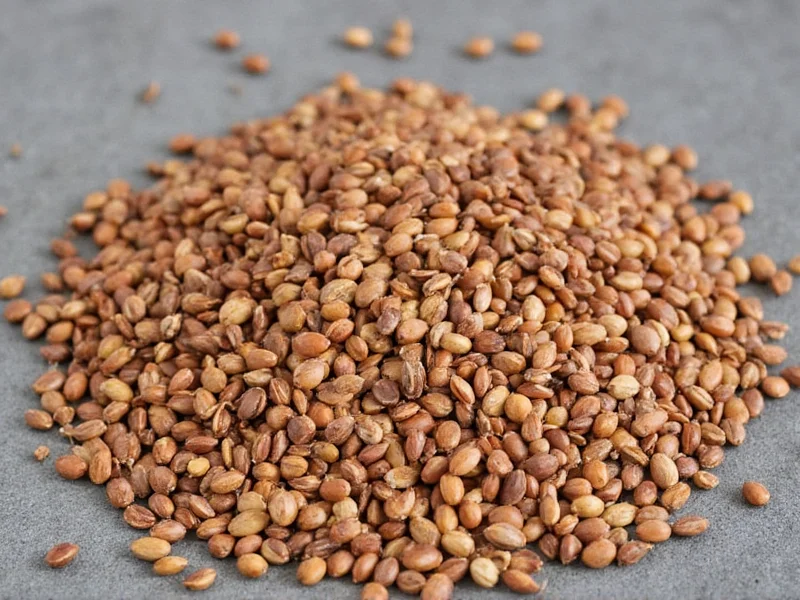Understanding where jalapeños fall on the Scoville scale helps home cooks and culinary professionals make informed decisions about their use in recipes. Despite the common misspelling "halapeno," the correct term is jalapeño, named after the Mexican city of Jalapa.
What the Scoville Scale Really Measures
The Scoville scale, developed by pharmacist Wilbur Scoville in 1912, measures the pungency or "heat" of chili peppers. Originally determined through human taste testing, modern laboratories now use high-performance liquid chromatography to measure capsaicinoid concentration more accurately.
Each Scoville Heat Unit represents the degree of dilution required before the heat becomes undetectable to human testers. For example, a jalapeño measuring 5,000 SHU would need to be diluted 5,000 times before its heat disappears completely.
Factors That Affect Jalapeño Heat Levels
Several variables influence where a specific jalapeño falls within the 2,500-8,000 SHU range:
- Growing conditions: Stressors like inconsistent watering or nutrient deficiencies can increase capsaicin production
- Ripeness: Red jalapeños (fully ripe) often measure hotter than green ones
- Genetic variation: Different jalapeño cultivars naturally produce varying heat levels
- Position on plant: Peppers growing in direct sunlight typically develop more heat
- Seed and membrane content: The white pith and seeds contain the highest concentration of capsaicin
Jalapeño Heat Compared to Other Popular Peppers
| Pepper Type | Scoville Heat Units (SHU) | Relative Heat Level |
|---|---|---|
| Bell Pepper | 0 SHU | Mild |
| Poblano | 1,000-2,000 SHU | Mild |
| Jalapeño | 2,500-8,000 SHU | Mild-Medium |
| Serrano | 10,000-23,000 SHU | Medium-Hot |
| Habanero | 100,000-350,000 SHU | Very Hot |
| Ghost Pepper | 855,000-1,041,427 SHU | Extremely Hot |
Practical Implications for Cooking with Jalapeños
Knowing the jalapeño scoville rating helps you anticipate how it will perform in recipes. At 2,500-8,000 SHU, jalapeños deliver noticeable heat without overwhelming other flavors, making them versatile for:
- Adding subtle warmth to salsas and guacamole
- Infusing oils and vinegars with mild heat
- Creating stuffed pepper dishes where heat complements fillings
- Adding dimension to marinades for meats and vegetables
For those sensitive to spice, removing the seeds and white membranes can reduce heat by up to 80% while preserving the jalapeño's distinctive flavor. Conversely, leaving these parts intact maximizes the pepper's heat potential within its natural range.
Common Misconceptions About Jalapeño Heat
Several myths persist about jalapeño heat levels:
- Myth: All jalapeños have the same heat level
Fact: Significant variation exists between individual peppers, even from the same plant - Myth: Smaller jalapeños are always hotter
Fact: Size doesn't reliably predict heat; environmental factors play a larger role - Myth: The heat disappears completely when cooked
Fact: Cooking redistributes capsaicin but doesn't eliminate it; prolonged cooking can actually intensify heat perception
Measuring Heat in Your Own Kitchen
While professional Scoville measurements require laboratory equipment, you can assess relative heat through careful tasting:
- Wear gloves when handling peppers to avoid skin irritation
- Cut a small piece from the tip (least spicy part)
- Wait 30 seconds after tasting before judging heat level
- Compare to a known reference (like a commercial jalapeño product)
Remember that individual tolerance to capsaicin varies significantly based on genetics and previous exposure to spicy foods.
Understanding Scoville Ratings for Recipe Development
When developing recipes using jalapeños, consider these practical guidelines:
- For mild applications: Use 1-2 seeded jalapeños per serving
- For medium heat: Use 1-2 unseeded jalapeños per serving
- For hot applications: Combine jalapeños with hotter peppers like serranos
- Always taste as you go when adjusting heat levels
The jalapeño's position on the scoville scale makes it an excellent gateway pepper for those exploring spicier cuisine, offering noticeable heat that remains approachable for most palates.
What is the average scoville rating for a jalapeño pepper?
The average scoville rating for a jalapeño pepper falls between 2,500 and 8,000 Scoville Heat Units (SHU). Most commercially available jalapeños measure around 5,000 SHU, but individual peppers can vary significantly based on growing conditions, ripeness, and genetic factors.
How does the jalapeño scoville compare to other common peppers?
Jalapeños (2,500-8,000 SHU) are significantly milder than habaneros (100,000-350,000 SHU) but hotter than poblanos (1,000-2,000 SHU). They're about 2-8 times hotter than poblanos but 12-140 times milder than habaneros. Serranos (10,000-23,000 SHU) are typically 2-3 times hotter than jalapeños.
Why do some jalapeños taste much hotter than others?
Jalapeño heat varies due to environmental factors like water stress, soil conditions, and sunlight exposure. Genetic differences between plants, ripeness (red jalapeños are often hotter), and even the specific position on the plant all contribute to heat variation. The seeds and white membranes contain the highest concentration of capsaicin, so how these are handled during preparation affects perceived heat.
Can cooking affect the scoville rating of jalapeños?
Cooking doesn't change the actual Scoville rating (capsaicin concentration), but it does affect how we perceive the heat. Heat can cause capsaicin to distribute more evenly throughout a dish. Prolonged cooking may break down some capsaicin, but it can also release more from the pepper's structure. Roasting jalapeños often enhances their flavor while slightly mellowing the heat.
How can I reduce the heat of jalapeños in my recipes?
To reduce jalapeño heat, remove all seeds and the white membranes (placenta), which contain most of the capsaicin. Soaking sliced jalapeños in salt water or milk for 15-30 minutes can also draw out some capsaicin. For significant heat reduction, consider using milder peppers like poblanos as substitutes while maintaining similar flavor profiles.











 浙公网安备
33010002000092号
浙公网安备
33010002000092号 浙B2-20120091-4
浙B2-20120091-4